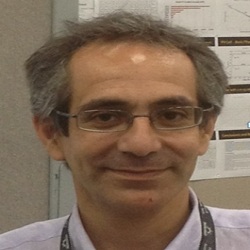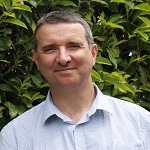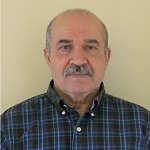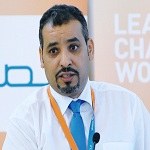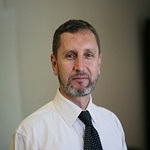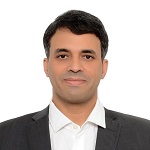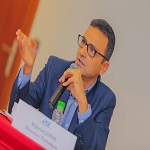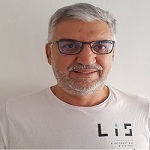Biography:
Giuseppe Marco Tina:- MS (1988), Ph.D. (1988) in Electrical Engineering from University of Catania (UdC), Italy.Power system Associate Professor at UdC.National Academic Qualification as Full Professor (2013).Industrial experience in Agip Refineries and ST Microelectronics in Italy (1993-1996).Associate researcher in INFN institute, Catania (I),(2002). Responsible of Erasmus agreements: Universitè de Corse Pascal Paoli (F); University of Jules Verne (F); TEI of Western Greece (GR); University of Jaén, (S), University of Split (HR). Keynote speaker at IEEE EPE conference (2012), Iasi (RO);IREC (TN, 2018), ICEERE (MA, 2018). Awarded in 2012 of the Diploma di Excelentia in teaching and research in power system from University “Stefan cel Mare”, Suceava (RO); best paper regular session in SEB 2014. Member of the Editorial Board of International Journal of Sustainable Energy (from 2015) and Helyion (from 2016). Author of 220 scientific papers: International journals (80), conference proceedings (133) and chapter of books (4), mainly on analysis and modelling of Wind and Photovoltaic generation systems, DGSs (Dispersed Generation Systems), Energy and Ancillary Services Market, Stationary applications of Hydrogen Technology, photovoltaic/thermal (PV/T) systems, monitoring and diagnostic of photovoltaic systems. Author of the book "Submerged and Floating Photovoltaic Systems: Modelling, Design and Case Studies", Academic Press, 2017. Responsible of power system research group and lab at UdC (8 y).Member of the IEEE (22 y) and Power and Energy Society (14 y). Vice-president of. the section of Catania of the Italian Federation AEIT ( 2010-2015). Member of IEA task 60 on PVT systems (from 2018). Coordinator of many regional and national research grants and research contracts.
Abstract:Active and Reactive Power Regulation in Domestic grid-Connected PV Systems
In the world, a huge spread of production units fueled by renewable sources not programmable is occurring. As a consequence, in a few years, a very rapid transformation from centralized generation system to distributed generation system is occurred.
This has caused problems difficult to solve in the distribution networks as the deterioration of voltage profiles along the lines, accidental disconnection of the interface protection systems of the inverter, problems of stability to the electric system. The reasons of these problems are to be found mainly in the non-adjustment of the distribution lines, in the role played by grid connected PV system and in uncertainty of renewable sources.
Conventional PV system only supplies the instantaneous maximum power from PV array to the grid through an inverter. Distribution companies cannot directly control distributed generators, and this makes the availability of electricity produced by GD plants an unknown variable difficult to estimate.
Technical standards introduce important changes regarding the participation of PV systems, depending of the size of the PV systems, to both frequency and voltage regulations. In this speech, algorithms for voltage and frequency regulation will be presented. They, along with a detailed model of a photovoltaic system, allow to study the impact of renewable sources on the distribution networks and the interaction of grid connected systems with the grid in the presence of over/under-voltage or over-frequency.
